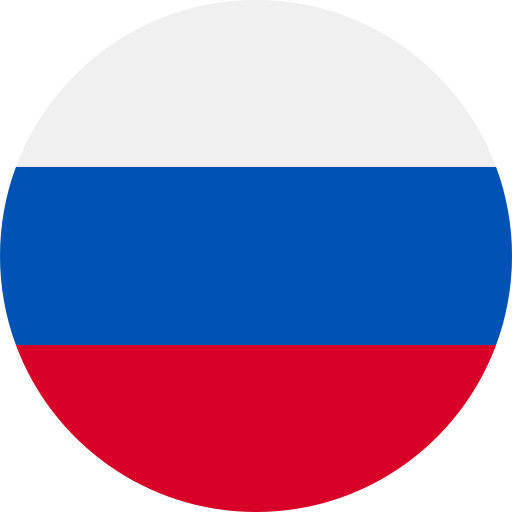Key Takeaways
- Diverse Accents: Regional Russian accents in Europe and Central Asia are shaped by local languages, cultures, and historical contexts, leading to distinct phonetic characteristics.
- European Variations: Accents in Europe vary significantly; for example, the Moscow accent is neutral while St. Petersburg has a more melodic quality influenced by local dialects.
- Central Asian Influences: In Central Asia, Russian accents incorporate features from Turkic languages, resulting in softer vowel pronunciations and unique intonation patterns that differ from European accents.
- Cultural Significance: Understanding the cultural influences on these accents is crucial for effective communication; it helps forge connections with audiences when selecting voiceover talent.
- Phonetic Nuances Matter: The specific phonetic traits of each regional accent can impact message delivery during voiceovers—selecting the right accent enhances relatability and engagement with listeners.
- Sociolinguistic Contexts: Historical interactions among ethnic groups have led to a rich tapestry of linguistic exchange that affects how Russian is spoken across different regions.
Ever wondered how regional Russian accents differ between Europe and Central Asia? You’re not alone. These accents tell fascinating stories of culture, history, and identity that shape the way people communicate across vast landscapes.
Overview of Regional Russian Accents
Regional Russian accents vary significantly between Europe and Central Asia, showcasing unique phonetic characteristics shaped by local languages and cultures. In Europe, accents often reflect historical influences from neighboring countries. For instance, the Moscow accent tends to be more neutral and is frequently used in media and voiceovers due to its clarity. However, accents from regions like St. Petersburg might sound more melodic with distinct vowel pronunciations.
In contrast, Central Asian accents incorporate elements from Turkic languages, resulting in noticeable differences in intonation and stress patterns. These influences create a rich tapestry of sounds that can be quite different from those found in European Russian speech. For example, speakers from Kazakhstan may exhibit softer consonant sounds compared to their counterparts in Russia.
Understanding these regional variations is crucial for anyone working with voiceover talent or seeking a specific tone for projects aimed at audiences within these regions. Clients should consider how an accent’s nuances can affect the overall message delivery when selecting a voice actor or artist for their needs.
When you explore options for voiceover services, pay attention to how regional accents contribute to authenticity and relatability in your projects. Whether you’re targeting European markets or aiming for listeners in Central Asia, choosing the right voice over talent can enhance engagement and connection with your audience.
Characteristics of Regional Russian Accents in Europe
Regional Russian accents in Europe exhibit distinct phonetic features influenced by local languages and historical contexts. Understanding these characteristics is essential for selecting the right voice talent, as they can enhance authenticity and relatability in your projects.
Differences Among Major Regions
Accents vary significantly across European regions. For example, the St. Petersburg accent often sounds softer and more melodic compared to the firmer, more pronounced Moscow accent. The Siberian accent tends to incorporate stronger vowel sounds, while accents from areas like Tatarstan reflect a mix of Russian and Tatar influences. Each regional accent adds a unique flavor to voiceovers, making it crucial to match the right voice artist with specific audience demographics.
Influences of Local Languages
Local languages play a vital role in shaping regional Russian accents throughout Europe. In border areas or regions with significant minority populations, you might hear elements from neighboring languages such as Ukrainian or Belarusian. These influences affect intonation patterns and stress placement within words, creating distinctive sound profiles that resonate differently with audiences. When selecting a voice actor for your project, consider how these linguistic nuances contribute to the overall message delivery and help forge connections with listeners.
Understanding these characteristics not only aids in proper accent selection but also enhances engagement when delivering your message through effective voiceovers.
Characteristics of Regional Russian Accents in Central Asia
Regional Russian accents in Central Asia showcase unique characteristics shaped by local languages and cultural influences. Understanding these features can enhance your choice when selecting voiceover talent for projects aimed at this diverse audience.
Linguistic Features Unique to Central Asia
Central Asian Russian accents often reflect the influence of Turkic languages, resulting in distinct phonetic patterns. You might notice variations in vowel pronunciation, where certain vowels become softer or more rounded compared to standard Russian. Intonation also plays a crucial role; speakers may emphasize different syllables, creating a melodic quality that varies from the more monotone European accents. Additionally, consonant sounds can shift slightly, leading to unique pronunciations that set these accents apart.
Cultural Influences on Accents
Cultural factors significantly impact how Russian is spoken in Central Asia. Historical interactions between ethnic groups have led to a rich tapestry of linguistic exchange. For example, you’ll hear elements from Kazakh and Uzbek blended into everyday speech among some communities. This cultural fusion not only affects vocabulary but also contributes to the rhythm and flow of speech patterns. When considering voiceovers targeting audiences in these regions, recognizing such nuances ensures authenticity and relatability—key components for effective communication.
By understanding these characteristics of regional Russian accents in Central Asia, you’re better equipped to choose voice talent that resonates with your intended audience, enhancing engagement through believable performances.
Comparative Analysis of Accents
Regional Russian accents differ markedly between Europe and Central Asia, reflecting unique cultural influences. Understanding these differences can enhance the effectiveness of voiceovers, making them more relatable to specific audiences.
Phonetic Differences
Phonetic characteristics vary significantly across regions. In Europe, accents often feature softer consonants and varied vowel sounds influenced by local languages. For example, the St. Petersburg accent tends to be more melodic than the firmer Moscow accent. Conversely, Central Asian accents incorporate elements from Turkic languages, resulting in rounded vowels and distinctive intonation patterns that create a unique musicality in speech.
Regions like Tatarstan showcase a blend of Russian and Tatar sounds, further diversifying phonetic traits. This blending affects how words are pronounced and can impact listeners’ perceptions during voiceover performances. When selecting voice talent for projects targeting these areas, consider how phonetic nuances resonate with local audiences.
Sociolinguistic Perspectives
Sociolinguistics plays a crucial role in shaping regional accents. Cultural interactions throughout history have led to rich linguistic exchanges that influence everyday speech patterns in both Europe and Central Asia. In Central Asia, historical ties with ethnic groups introduce elements from Kazakh and Uzbek languages into Russian speech.
Understanding sociolinguistic factors is essential for voice artists aiming to connect authentically with their audience. Accents carry social meaning; using an appropriate accent can enhance relatability in projects aimed at specific demographics or regions. By recognizing these dynamics, you’ll better appreciate how regional variations affect message delivery through effective voiceovers.
When choosing a voice actor for your project, keep these aspects in mind—the right accent not only adds authenticity but also strengthens engagement with your target audience.
Conclusion
Understanding the nuances of regional Russian accents across Europe and Central Asia can significantly impact your communication strategies. By recognizing how these accents reflect cultural identities and historical influences, you can create more relatable content for your audience.
Whether you’re involved in voiceovers or simply looking to connect on a deeper level, embracing these linguistic differences enriches your understanding. The unique phonetic characteristics of each region not only enhance authenticity but also foster engagement. As you navigate this diverse landscape, keep in mind the importance of accents in conveying social meaning and relatability.
Frequently Asked Questions
What are the main differences between Russian accents in Europe and Central Asia?
The main differences lie in phonetic characteristics and influences from local languages. European accents often reflect historical ties with neighboring countries, while Central Asian accents incorporate elements from Turkic languages, resulting in unique intonation and stress patterns.
How does the Moscow accent differ from other European Russian accents?
The Moscow accent is more neutral and commonly used in media, while other European accents vary significantly, such as the softer St. Petersburg accent or the firmer Siberian accent, which features stronger vowel sounds.
What role do local languages play in shaping regional Russian accents?
Local languages contribute to regional Russian accents by introducing phonetic elements that affect intonation and stress patterns. In border areas, influences from Ukrainian and Belarusian can notably alter how Russian is spoken.
How do cultural factors influence Central Asian Russian accents?
Cultural interactions among ethnic groups have led to a rich mix of linguistic exchanges. Elements from Kazakh and Uzbek greatly influence pronunciation and create distinct melodic qualities in Central Asian Russian speech.
Why are these regional differences important for voiceover work?
Understanding regional differences enhances voiceovers’ effectiveness by making them more relatable to specific audiences. Accents carry social meanings that can improve engagement in projects tailored to particular demographics or regions.







